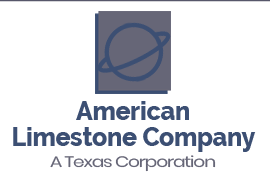Advantages of the ALC Solution
Standard limestone pieces ordered like lumber
Most items are sold by the square and linear foot, while others are specified by the piece. Just as a builder can specify standard 2”x 4” wood studs, they can now specify the standard architectural elements necessary for a Tuscan entablature profile per Palladio, for example.
Value engineering has already been done
If the ALC Solution is specified at a job’s inception, a number of the embedded costs of using stone—beyond those of product and installation—can be reduced, if not completely eliminated.
Elegant natural limestone with considerable value beyond the cost
A building clad in limestone is distinctive, an asset which may add to its resale value and certainly enhances its perceived worth.
Pre-designed and pre-engineered products cost less—Some items are in stock
Standardization of product and terminology reduces inefficiencies of all descriptions and allows for both the mass production and stock-piling of principal limestone elements and panels.
Pieces can be modified on the job site
In the same way that lumber can be modified on a job site, our standard elements and panels can be cut to fit using a diamond blade saw.
Lower product cost— ALC Limestone panels often 1/3-1/4 thickness of conventional limestone panels
The panels installed with our anchor system are 1” thick (2” thick for split and roughback finishes). In addition to the lower cost of material, freight costs are proportionately reduced.
Installation is simple and the installation cost much lower
Mounting is as simple as 1-2-3. Screw the anchors to the building’s sheathing; slide on the limestone elements; and mortar, grout or caulk the joints. Homeowners and carpenters have installed it.
Time and labor are reduced due to the swiftness of mounting and the lightness of our 1″ limestone panels. Each installation of a 32”x16”x1” limestone panel (3.55 sq.ft. = 44 lbs.—requires one person to carry) is the equivalent of 25 brick and weighs significantly less than a conventional stone block (3.55 sq.ft. x 3-1/2” = 150 lbs.—requires two people to carry).
No brick ledges, lintels or relief angles required
The anchor system transfers the entire live load of the stone to the building’s structure rather than onto lower panels, thus making such support elements unnecessary.
Working drawings available for download
Working drawings for pre-designed and pre-engineered architectural elements are available for download and insertion in architectural plans, eliminating the need for revisions and most setting drawings when the ALC Solution is specified at a job’s inception.
Excellent for cladding existing and metal buildings
Existing buildings can be transformed by the addition of limestone, including many that cannot support conventional stone panels and installation.
When metal cladding is not an option, the ALC Solution provides a stunning alternative for metal buildings. Anchors can be screwed directly into the metal studs.
Designed for earthquake-prone areas
Please call for specifics.
More interior space compared to brick or conventional stone installation
As ALC Solution limestone panels are only 1” thick and require a mere 1/2” air space, the total thickness of the wall is reduced considerably, relative to 3-1/2” thick conventional panels and 3-5/8” thick brick which require approximately 1” of air space when installed.
For example, contractors typically submit bids based on the square footage of a building. Employing 1” thin ALC Solution limestone panels (versus 3-1/2” conventional panels or 3-5/8” thick bricks) therefore presents owners with one of two options: reduce the exterior perimeter of their building to bring down the cost of the project without sacrificing usable interior space; or, retain the original exterior perimeter and maximize the usable interior space.
For commercial properties leased by the square footage, the latter option will increase their rental revenues.
Moisture Prevention
Any moisture penetration of the system will collect on the rear of the panels and travel down the surface to gather in the anchor channel below. From there it migrates to the ends of the anchor channel and weeps to the course below: anchor ends are separated by 1″ for this purpose. Eventually, all moisture collects on the base “J” anchor where it weeps through 1/4″ weep holes drilled into the horizontal leg of the anchor. This allows moisture to escape while preventing insect and plant incursions.

